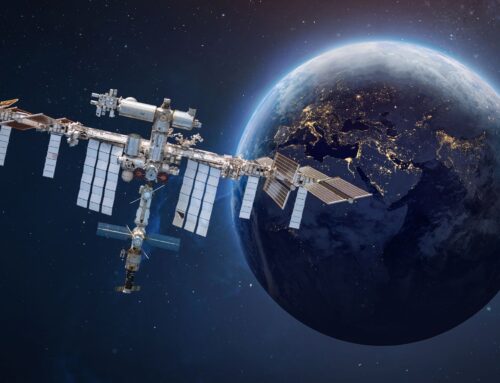Financial sustainability is essential to any effective and successful industry. The same can be said of today’s space sector. Although NASA works earnestly with private companies to innovate and save money, it continues to suffer from the albatross of outdated structures which were developed in the first era of space exploration.
An active space-based industry includes utilizing space-based clean energy sources, mining asteroids for raw materials, creating structures in space for manufacturing and research, tapping sources of water, and upcycling hazardous materials. But these projects, including the communication and support operations for them, demands a shift away from the current model to one of increased commercialization.
Transportation infrastructure has already started to create an environment for private investors to develop commercial, space-based industries which can increase quality of life and decrease the cost of living.
It’s estimated that in 10 to 20 years, the basic infrastructure needed for lunar facilities, fuel depots, travel shuttles (among others) should be attainable within the same budget currently given to NASA.
Commercialization Creates a Sustainable Space Industry
The private space sector can develop practical uses for space’s assets much faster than government organizations, fostering a sustainable market-based economy in the process. A commerce-based structure, similar to what we have in ocean freight and airspace, sees government providing legal frameworks where private businesses can flourish. In the space sector, this would only evolve our use of the space environment, maximizing our potential to pursue activities like private launch vehicle technology and spending public funds on infrastructure to create a financially self-sustaining commercial industry.
It’s important to note that this all can happen on NASA’s budget. In a commerce-based model, the private sector helps develop the space industry while NASA and other government entities buy transport and other essential services, like on-orbit facilities, as customers of these private companies. We’ve already seen NASA buy space transportation in this way, similar to the purchase of other transportation systems. The key is to extend this practice, making it more consistent within the current budget, so we can foster substantial advancements in space.
Despite the slow development of the private sector, launch companies have created profitable services. Geosynchronous orbital position used in telecommunications is one such area that is profitable, despite our inefficient means of accessing it.
SpaceX’s Falcon 9 launch also had notable success with one-third the cost of a traditional NASA-contracted launch, showing that the private sector can fulfill many NASA functions without the full cost. Not only can the private sector invest in a self-sustaining industry by allocating NASA space launch system funds to infrastructure projects, but this allows NASA to focus on research and science, an area that NASA clearly excels.
The redistribution of NASA funding can significantly improve the capabilities of the private sector, building more publicly funded research and commercial-quality resources already identified in space that our current paradigm prevents us from harnessing. As an added bonus, moving to a commercial approach allows for mass production of space equipment and standard designs that can carry both cargo and humans in cheaper and more effective than how we operate now.
Large-Scale Advancements in Space (without Extra Government Funding)
Despite how much money Congress allocates for status-quo space activities, its utility will likely continue to stagnate, making funding increasingly ineffective, and only stifle innovation in the U.S. space program. The first step to creating a healthy private sector is to promote policy changes which can further enhance commece and reduce costs.
Research from the Reason Foundation suggests several policy recommendations to help empower the economics of the private space sector.
Legal/Security Recommendations: Congress should consider establishing U.S. recognition of transferable resource rights, similar to private property rights, based on the capability of reaching space resources. Transferable rights that align with international law also need to be established for keep-away zones around space objects. In addition, safe-harbor laws need to be created for buying, selling and hypothecating rights on open markets or exchanges and in commercial and financial contracts which are registered and violated under U.S. law and in accordance with international law.
Procurement Policy Recommendations: A policy of reliance on the private sector for launch operations and in-space facilities, including commercial resupply and crew transportation to ISS is fundamental. In fact, the future of ISS should offer anchor-tenant contracts for researching space in an orbital facilities. NASA should consider providing purchase orders for results conducted during science and exploration missions rather than contracting for such data. A solution to produce these frameworks requires a working group that includes representatives of the space development community to recommend procedures and ensure that NASA’s spaceflight and operations support private sector research and development.
Policy Implementation Recommendations: Governments should establish criteria to analyze when the private sector is completely capable of heavy-payload launch and determining a timeline when NASA should exit the development of large-payload launch vehicles and their launch operations. In addition, the government may want to tackle NASA’s future exploration projects to form on-orbit facilities develop standard interfaces and interconnects with private industries. The private sector should be allowed innovative freedom to find the best delivery models. Pilot projects for on-orbit refueling should be a 10-year goal, including the open purchase order for water delivery to these orbital fueling facilities. At the same time, NASA should focus on their dual-purpose probes to provide scouting data for space resource harvesting and even further economic expansion in space.
It’s evident there are numerous moving parts to creating a more prosperous commercial economy in space industry. However, with competition across global space agencies, the innovation capable within private sector will start to take precedence, serving promising economic benefits for the planet and beyond.






